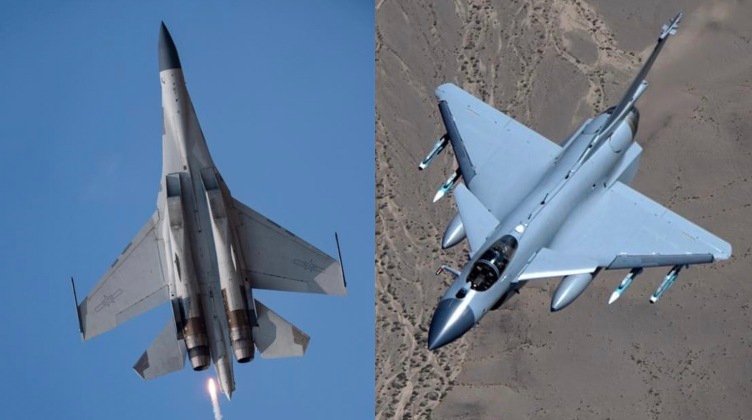Formidable Challenger: China’s J-10 Fighter Jet Threatens U.S. F-16 Dominance in Global Defense Market
A recent report published by the American magazine The National Interest has sparked renewed debate in international defense circles by highlighting the growing global appeal of China’s Chengdu J-10 fighter jet—particularly the upgraded J-10C variant. The report positions the aircraft as a serious and emerging threat to the long-standing dominance of the U.S.-made F-16 in the global arms market.
With advanced technologies, a competitive price point, and recent real-world combat validation, the J-10C is reshaping the dynamics of fighter jet procurement for many nations—especially those seeking modern military capabilities without the political and logistical constraints that often accompany American defense deals.
A Shift in the Skies: J-10’s Real-World Performance
The J-10C’s rise to prominence isn’t based on marketing alone. One of the key turning points came during the recent skirmishes between India and Pakistan. During this confrontation, Pakistan deployed J-10C fighters equipped with PL-15 long-range air-to-air missiles, reportedly achieving success in neutralizing Indian aircraft—including the more expensive French-made Rafale jets.
This incident marked the first verified combat use of the J-10C and its PL-15 missile, giving it something the F-16 had long held over other jets: battlefield credibility. According to defense experts, this real-world performance sends a strong signal to potential buyers that the Chinese platform is not only cost-effective but also combat-ready.
Technological Leap: What Makes the J-10C So Competitive?
The J-10C represents the most advanced variant of the J-10 series, which was first introduced in the early 2000s. Its modern capabilities include:
-
Active Electronically Scanned Array (AESA) Radar: Similar to what’s found on newer Western fighters, providing superior tracking and targeting capabilities.
-
Indigenous WS-10B Engines: These engines reduce China’s reliance on Russian technology and allow for higher thrust and improved maneuverability.
-
Stealth Features: Although not a fifth-generation aircraft, the J-10C incorporates reduced radar cross-section design features to enhance survivability.
-
Multirole Flexibility: The aircraft can conduct both air-to-air and air-to-ground missions with high effectiveness.
-
PL-15 Missile Compatibility: The missile’s reported range of up to 200 km outclasses many of the weapons typically carried by the F-16, giving the J-10C an edge in beyond-visual-range (BVR) combat.
In short, the J-10C offers 4.5-generation fighter capabilities at a fraction of the cost of Western jets. This makes it highly attractive to countries that want modern airpower without draining national budgets.
The F-16 Legacy and U.S. Soft Power
For decades, the F-16 Fighting Falcon has been one of the most widely used fighter aircraft in the world. Over 4,500 units have been built since the aircraft’s introduction in the 1970s, and it remains in service with more than 25 countries. Its reputation as a reliable, battle-proven multirole jet has helped it become one of the U.S.’s most successful defense exports.
However, the F-16’s global footprint is also tied to America’s geopolitical strategy. Nations that buy American military equipment are often drawn into broader alliances, training programs, and intelligence-sharing arrangements. This web of defense relationships extends U.S. soft power while also generating billions in revenue for American defense contractors.
China’s entry into this space with the J-10C disrupts not only the financial aspect but also the strategic balance of influence. Beijing offers arms sales with fewer political strings attached, making them appealing to nations that wish to avoid being pulled into Western security frameworks.
See more:
China’s Growing Client Base
China has actively targeted developing nations for arms exports, often combining military deals with large-scale infrastructure projects under its Belt and Road Initiative (BRI). The J-10C is a key part of this strategy.
Countries such as:
-
Pakistan: Already operating J-10Cs and using them in active duty.
-
Iran: Reportedly in talks with Beijing for potential J-10 acquisitions as a workaround to Western sanctions.
-
Egypt, Algeria, and Nigeria: Nations that have traditionally balanced purchases from both East and West are now leaning toward Chinese options due to affordability and political flexibility.
China’s offer often includes training packages, local assembly options, and long-term maintenance support, which sweeten the deal for budget-conscious governments.
Implications for the U.S. Defense Industry
If the trend continues, China’s growing success in the fighter jet market could deal a major blow to American defense exports. The F-16 remains a strong competitor—especially in its upgraded Block 70/72 versions—but it is also more expensive, and sales are subject to strict U.S. export control laws.
With more countries questioning the long-term reliability of U.S. partnerships, especially after inconsistent foreign policy shifts, Chinese alternatives like the J-10C are gaining credibility.
From a strategic perspective, the loss of military sales also weakens long-standing defense alliances and reduces America’s influence in regional security matters. Each lost sale isn’t just a missed commercial opportunity; it’s a missed chance to deepen military and political ties.
Looking Ahead: The Fighter Jet Market of Tomorrow
While the F-16 continues to be upgraded and fielded, it now faces real competition in a market where China is determined to lead. With more than 60 countries operating either the F-16 or its variants, the shift won’t happen overnight—but the pressure is real.
China’s J-10C doesn’t just challenge American air dominance—it redefines what’s possible for countries caught between budget constraints and the need for cutting-edge defense technology.
For U.S. defense planners and manufacturers, the message is clear: complacency is not an option. If the U.S. wants to maintain its global edge, it must innovate faster, price smarter, and build more flexible defense partnerships.
In conclusion, the J-10C’s emergence as a credible, combat-tested, and technologically advanced fighter jet is reshaping the global arms race. With its strategic pricing, real-world performance, and appeal to politically independent buyers, China’s J-10C poses a formidable threat to the U.S. F-16’s long-held dominance. The global sky is getting more competitive—and the battle for air superiority is no longer just about technology, but influence, access, and trust.




